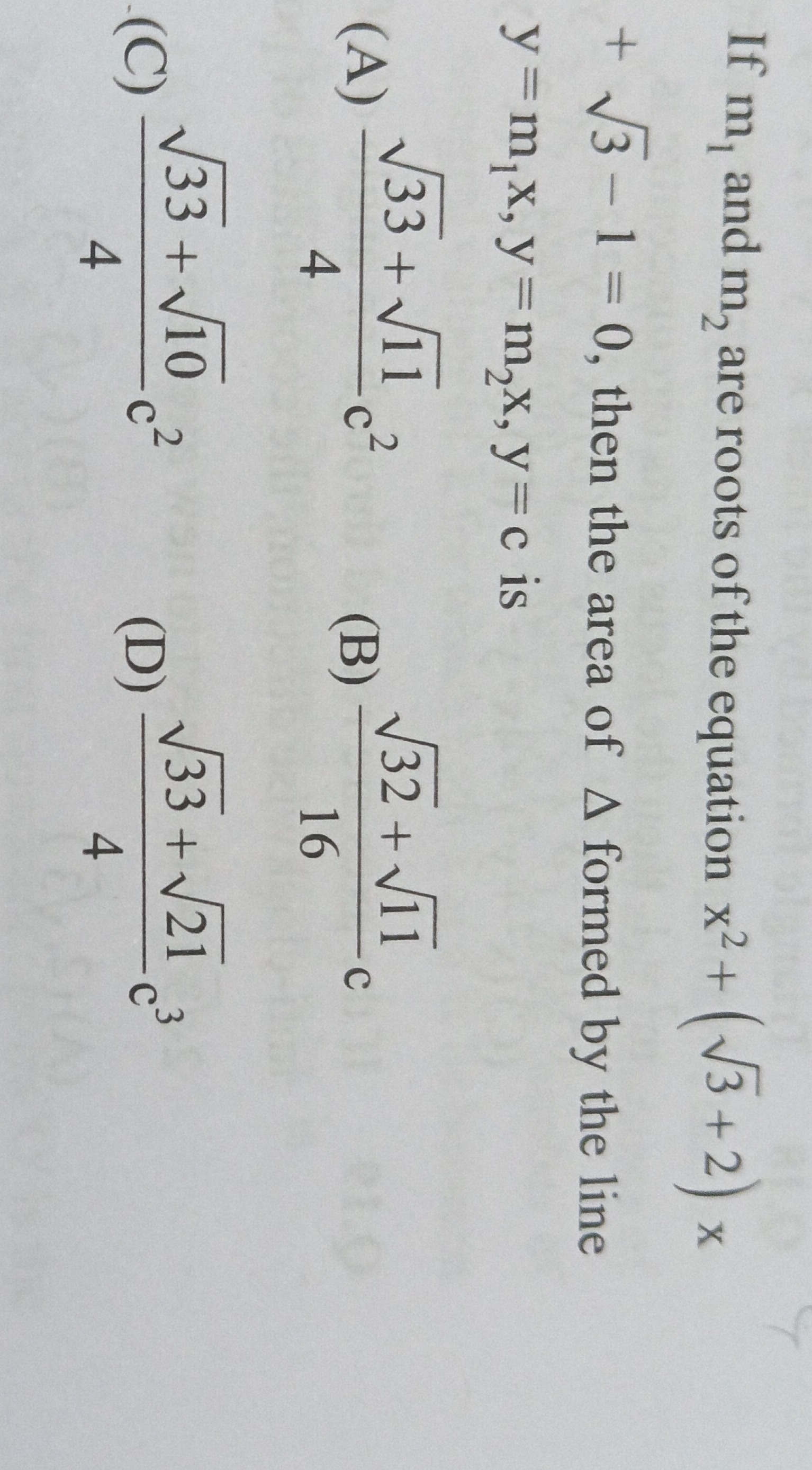Question
Question: If m₁ and m₂ are roots of the equation x² + (√3 + 2) x + √3 - 1 = 0, then the area of A formed by th...
If m₁ and m₂ are roots of the equation x² + (√3 + 2) x + √3 - 1 = 0, then the area of A formed by the line y = m₁ x, y = m₂x, y = c is

A
433+11c2
B
1632+11c
C
433+10c2
D
433+21c3
Answer
433+11c2
Explanation
Solution
The area of the triangle formed by the lines y=m1x, y=m2x, and y=c is given by 2c2m1m2m1−m2. From Vieta's formulas for x2+(3+2)x+3−1=0: m1+m2=−(3+2) m1m2=3−1 We calculate (m1−m2)2=(m1+m2)2−4m1m2: (m1−m2)2=(−(3+2))2−4(3−1)=(7+43)−(43−4)=11. So, ∣m1−m2∣=11. Substituting these values into the area formula: Area =2c23−111=2(3−1)c211. Rationalizing the denominator: Area =2(3−1)c211×3+13+1=2(3−1)c211(3+1)=4c2(33+11).
